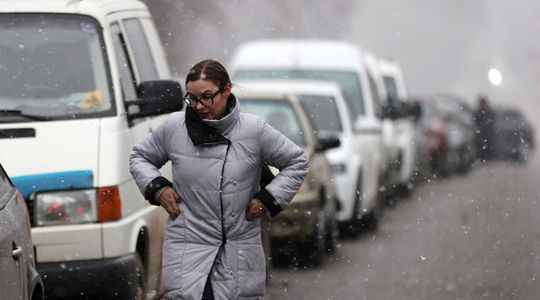How many of the 44 million Ukrainians will flee the bombs of the Russian army? No one in Brussels dares to make a precise prognosis. Up to 5 million people could seek refuge beyond Ukraine’s borders, estimates the United Nations High Commissioner for Refugees. For many, the destination will be the nearby European Union (EU).
From the first hours of the conflict, Poland, Romania, Slovakia and Hungary opened their arms to the Ukrainians. “Eastern Europe knows who it has as a neighbour, the countries were very prepared and history taught them to be careful”, greets a minister from Western Europe. A diplomat from Brussels relativizes all the same: “The reception of white and Christian migrants seems for some easier than that of Syrians or Afghan Muslims…”
Poland plans more than one million refugees
Those who had already left Ukraine in the early days of the conflict had ties in Europe – family or friends. According to the Polish government, only 10% of arrivals needed accommodation. Romania also estimates that half of the people arriving at its borders have already left for another country. According to the Commission, the Ukrainian diaspora is particularly present in Germany, Spain, Portugal, Italy, the Czech Republic and of course in Poland, which could see an influx of more than 1 million men, women and children.
The European institutions, in particular through the Frontex border guard agency and the asylum agency, stand ready to offer their assistance. In the corridors of Brussels, some worry that criminals or Russians with murky intentions could enter the EU without checks. At this stage, the Eastern European countries nevertheless intend to manage the situation with their own means: Warsaw or Budapest, cold with Brussels before the crisis, would like to demonstrate to their populations that they can manage without community help.
Despite everything, the interior ministers of the European Union are already working on medium-term measures. Ukrainians who have a biometric passport are legally exempt from a visa to enter European territory, so they can stay and move there legally for ninety days. But “we must be ready for the 91st day and for greater flows”, warns Commissioner Ylva Johansson.
Supported by Gérald Darmanin, who chairs the Council of European Ministers of the Interior, she proposed activating temporary protection, a device planned since 2001 and never used so far. “Adopted after the wars in Yugoslavia and then in Kosovo, this directive makes it possible to deal with this type of situation”, points out researcher Matthieu Tardis, director of the Center for Migration and Citizenship at the French Institute for International Relations.
Obstacles to the European asylum system
Unlike asylum, which is granted on an individual basis, temporary protection applies to a group of people. Those who benefit from it can work, send their children to school and receive social assistance. To trigger it, all that is needed is a political decision, taken by a qualified majority of the Twenty-Seven. “The directive harmonizes the status and rights throughout the Union, continues Matthieu Tardis. It gives clarity and makes it possible to avoid secondary movements between European countries.”
Sunday, February 27, the announcement of this scheduled activation did not arouse great enthusiasm among the Poles, Hungarians or Slovaks. For several years, they have been blocking the reforms of the European asylum system, in the name of their opposition to any distribution of refugees in the Union. However, the directive contains precisely this principle in order to relieve the countries on the front line.
At the time of writing these lines, Monday evening, the European Commission and the French presidency nevertheless seemed determined to move forward. “We can play on the date of implementation, reflects a diplomat. But we must prepare, because in three months, Ukrainians will find themselves without status on European territory. If we do not activate this system of temporary protection, they will seek asylum.” With the risk of clogging the asylum systems of countries of first entry like Poland, since the European system provides that they are the ones who process all requests.
